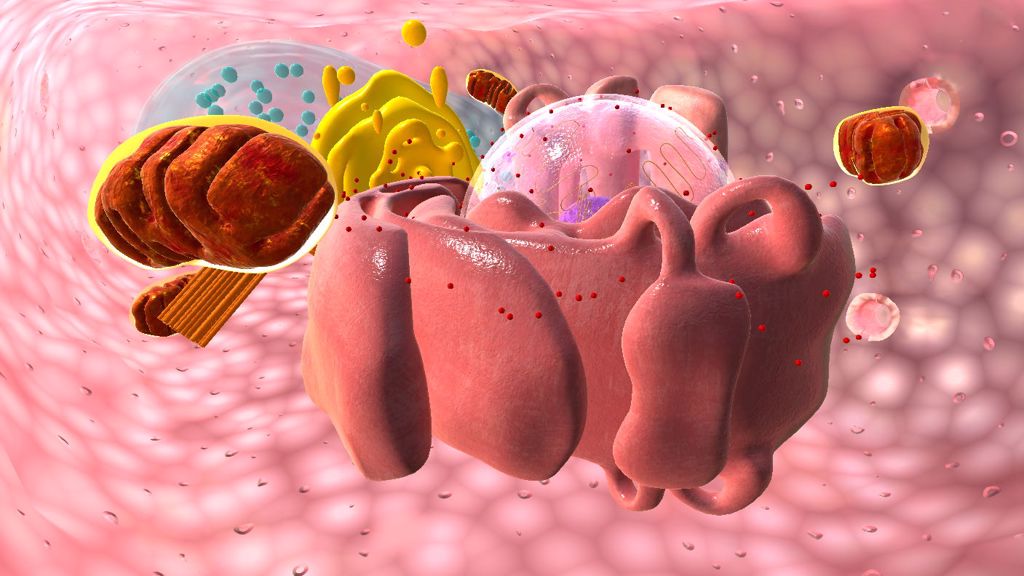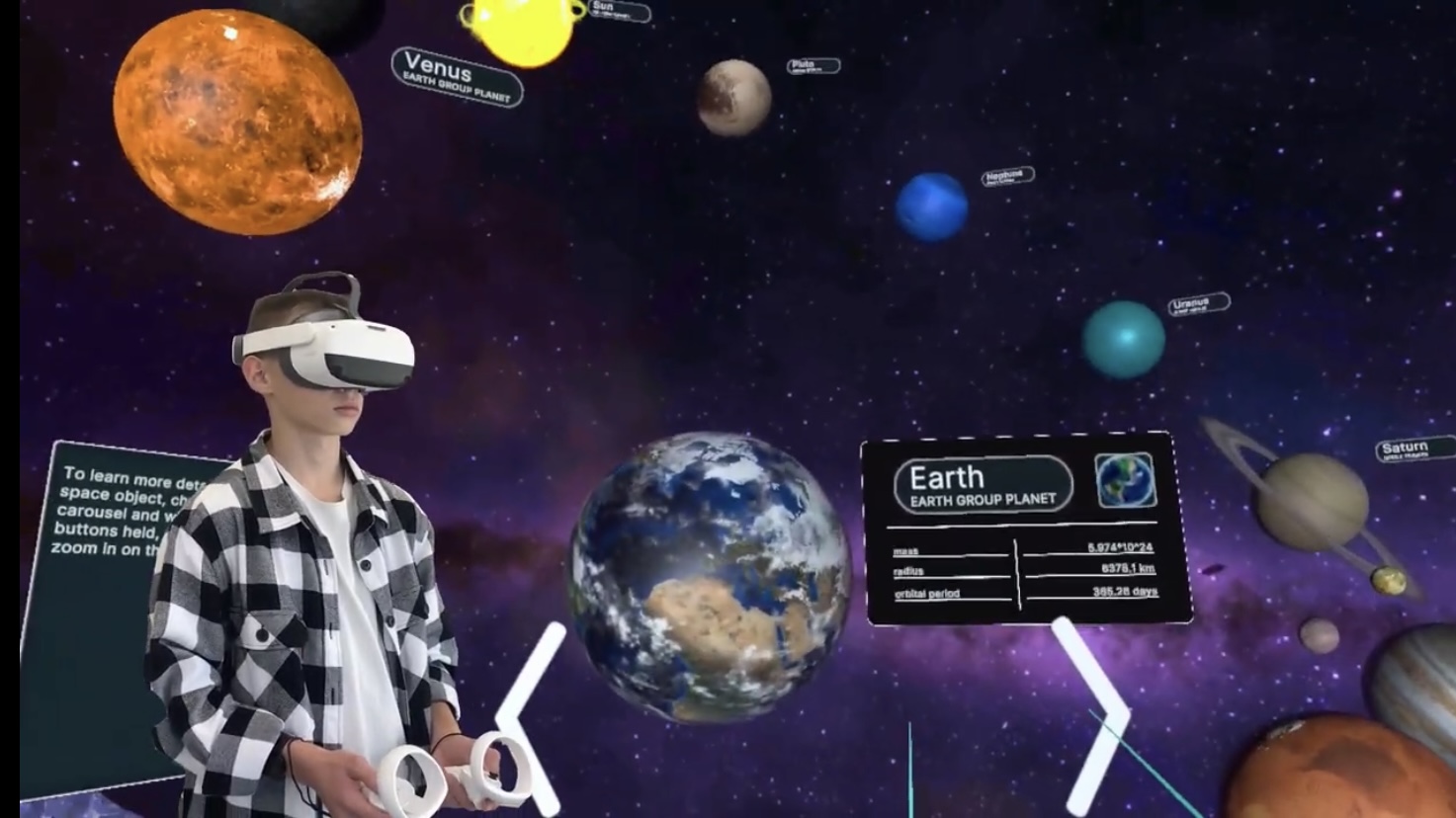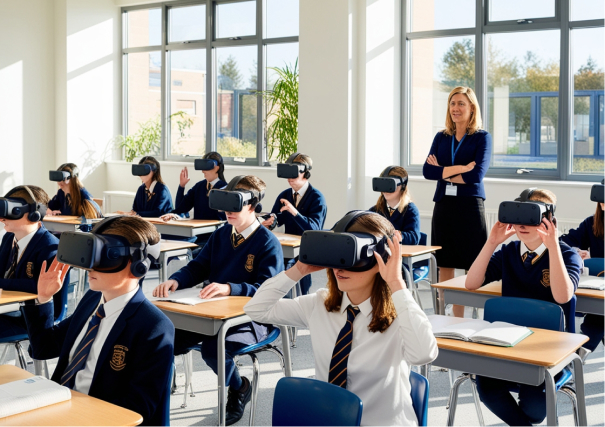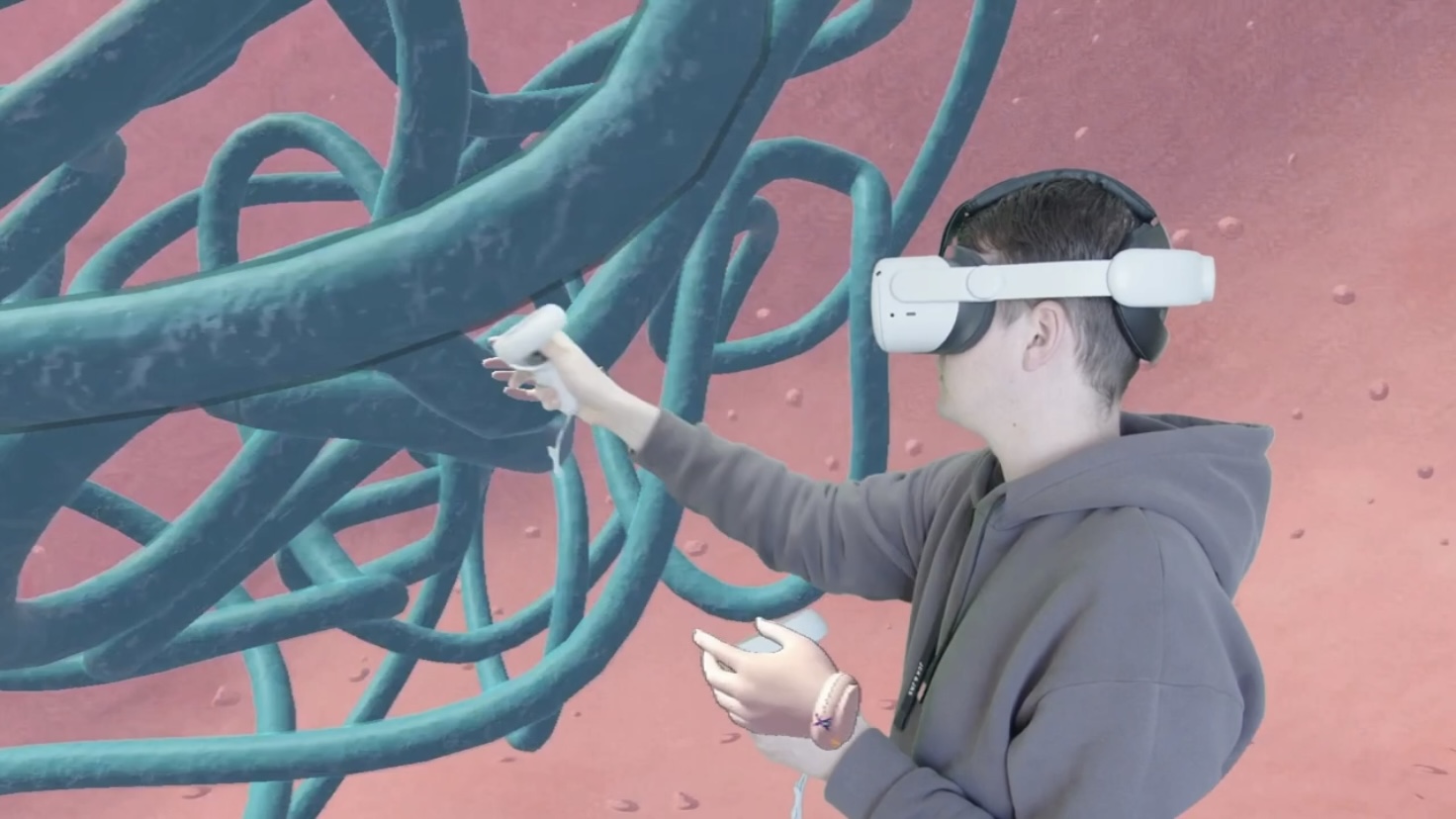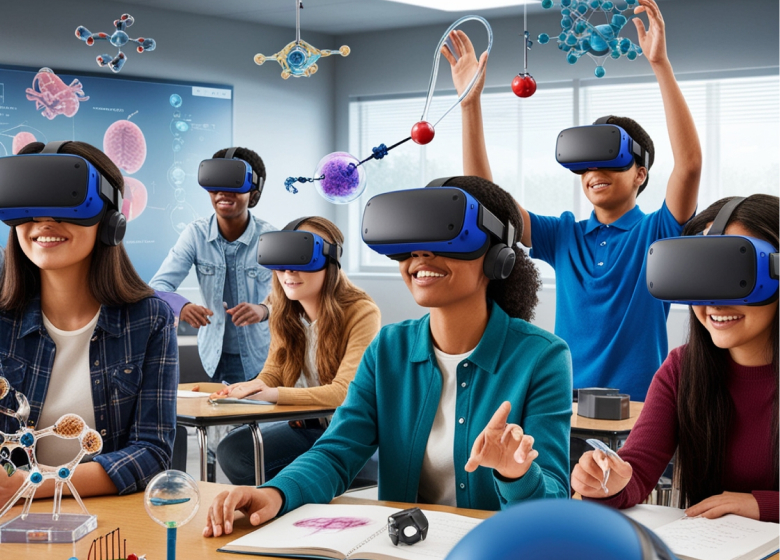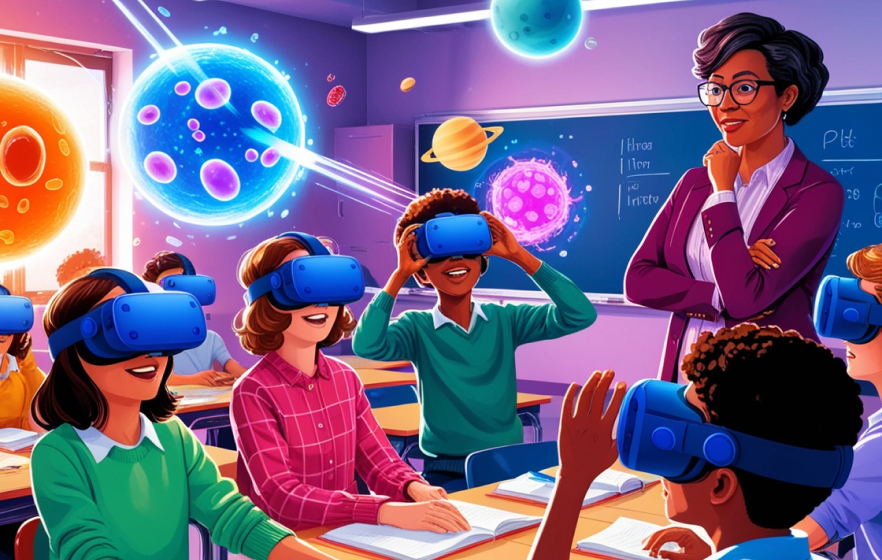
Let’s be honest: virtual reality in education sounds like the coolest thing since sliced bread. The idea of students stepping into VR classrooms, exploring VR biology labs, or traveling across the solar system in VR physics is undeniably appealing. But is VR truly the all-encompassing cure that will magically fix disengaged students, outdated teaching methods, and complex STEM topics? Let’s take a closer look, referencing real examples of VR learning that bring this debate to life—and see where VR is brilliant and where it might fall short.
VR Brings Biology Alive—But Does It Fit Every Curriculum?
[caption id="attachment_1671" align="alignnone" width="1024"] XReady Lab VR education: VR Photosynthesis laboratory[/caption]
When people talk about VR for education, biology is often the first subject that comes to mind. Imagine your class exploring the inner workings of a cell in 3D rather than staring at flat illustrations.
Diving Inside Cells
For instance, XReady Lab’s VR Cell showcases how students can “step into” organelles instead of just looking at them in a textbook. This approach transforms cell biology into a hands-on journey, helping learners to see the life and structure inside a plant or animal cell. The result? Real engagement with a topic that’s often seen as too abstract.
Making Mitosis Tangible
Meanwhile, Mastering Mitosis with XReady Lab VR tackles the dreaded cell-division lesson. Rather than memorizing phases from a chart, students get to interact with chromatids, observe the nuclear membrane’s breakdown, and actually “feel” each stage of mitosis. That’s huge for retention and excitement. Still, teachers must ensure these tools align with their school’s curriculum, so it’s not just a flashy demo but an actual STEM lab experience that fits national standards.
Rocketing into Space or Exploring Physics—Potential vs. Reality
[caption id="attachment_962" align="alignnone" width="1024"] Solar System Xready Lab[/caption]
Beyond biology, physics also benefits from immersive VR, letting students perform advanced experiments without the safety risks or expensive lab equipment.
VR Solar System Adventures
Apps like XReady Lab’s VR Solar System transport learners into outer space. Students “land” on planets, adapt to extreme conditions, and digest cosmic facts that used to be too huge or too distant for them to grasp. It’s captivating and perfect for astronomy lessons, but it won’t replace a comprehensive physics curriculum by itself.
Electrifying Lessons
Another example is the concept of electrification in physics, which might seem mysterious or dry until students see it in virtual reality. As highlighted in Exploring Electrification in Virtual Reality (note the same link covers multiple VR physics topics), VR can show electrons transferring during friction, contact, or induction. This clarity beats any blackboard diagram you’ve drawn. However, teachers still need to ensure alignment with official standards and confirm that students have the background knowledge to interpret what they see.
Beyond Academics: Tackling Social Issues and Safety with VR
The power of virtual reality education doesn’t stop at labs. It can also address critical social and emotional aspects of school life.
Bullying Intervention
In Combating School Bullying with Virtual Reality, we see how VR scenarios can help students practice empathy and conflict resolution. Instead of a dull lecture on why bullying is wrong, kids immerse themselves in safe, realistic encounters that foster genuine understanding. Impressive, but again, schools need a broader anti-bullying framework to see major results.
Emergency Preparedness
Similarly, Enhancing School Safety with Virtual Reality reveals VR’s potential to train staff and students for intruder or fire drills. You can simulate scenarios nobody wants to enact in real life, but the technology must be complemented by real-world protocols and teacher oversight.
At-Home STEM Exploration: Great, But Not Always Curriculum-Tied
[caption id="attachment_1510" align="alignnone" width="480"] XReady Lab VR education: VR Mitosis laboratory[/caption]
It’s no secret that VR can also revolutionize home learning. Parents often panic when they see kids glued to gaming headsets or phones, assuming zero educational value. But that doesn’t have to be the case.
Smart Play at Home
Smart Play: Using VR to Develop Your Child’s Cognitive Skills outlines how VR apps can actually improve problem-solving, curiosity, and even math skills. This is where VR in schools merges with at-home activities, fueling interest without direct teacher supervision.
Inclusivity and Remote Options
Meanwhile, some VR solutions broaden access to learning for students with physical or logistical constraints. For instance, Unlocking Learning for Everyone: Virtual Reality’s Role in Inclusive Classrooms and Revolutionizing Remote Learning with VR show how VR can support inclusive or distance education. It’s an amazing development but requires robust technology infrastructure—not every district or family can afford that.
So, Is VR the Ultimate Fix?
Given these examples, it might seem VR is unstoppable. But is it really a “magic bullet” for every problem in education? Possibly not. Even the most engaging VR learning platform can’t fix every systemic issue:
Alignment with Curriculum: Great VR apps are pointless if they don’t fit seamlessly into a recognized course of study. Tools like XReady Lab do a good job of referencing global standards, but many third-party apps don’t.
Teacher Training: Fancy VR gear is worthless if teachers aren’t trained or lack time to integrate it properly. Time constraints and administrative burdens can stifle even the best-intentioned educational technology.
Budget and Access: VR headsets for schools—particularly high-quality ones—can be expensive. Some VR solutions for schools are cost-effective, but not all.
Educational Goals vs. Tech Demos: VR might wow students, but are they meeting required learning objectives? Educators must distinguish between novelty and deep, lasting knowledge.
Student Safety and Health: Is virtual reality safe for extended use? Short sessions can be beneficial, but not everything needs to be in VR.
Conclusion: A Powerful Tool, Not a Cure-All
“VR education is awesome,” you say. “Why aren’t all schools using it?” The simple answer is that while VR offers incredible advantages—like interactive classroom activities, improved STEM lab experiences, and digital classroom innovations—it’s not the only path forward. Nor is it automatically the best solution for every challenge teachers and students face.
Still, the possibilities are thrilling. Through carefully designed VR lessons, students can explore everything from the internal structure of cells to electrification in physics, from bullying interventions to emergency responses. Used thoughtfully, VR can transform how we learn and teach.
Just remember: no single technology instantly solves all educational dilemmas. By blending virtual reality in education with strong pedagogy, relevant curricula, and ongoing teacher support, we stand a better chance of giving kids the rich, future-focused learning experiences they deserve.
